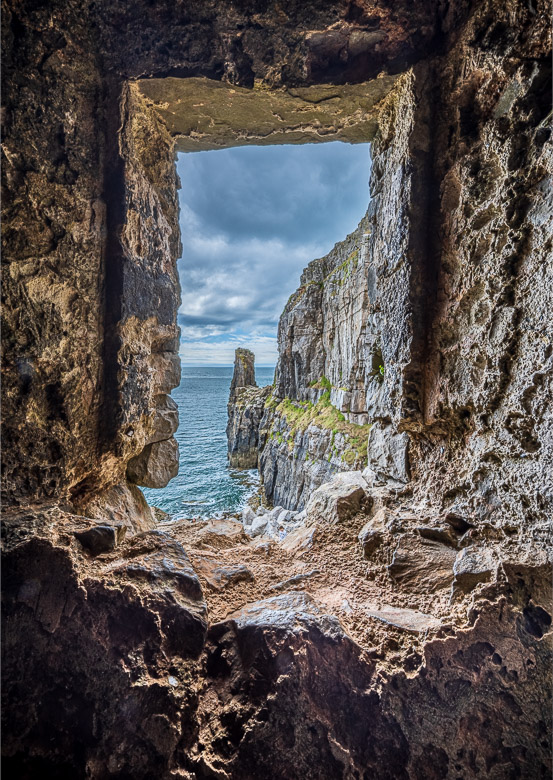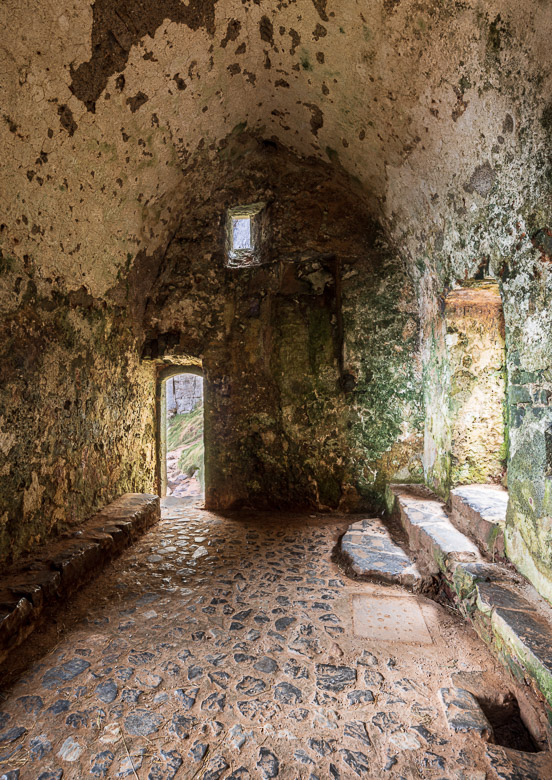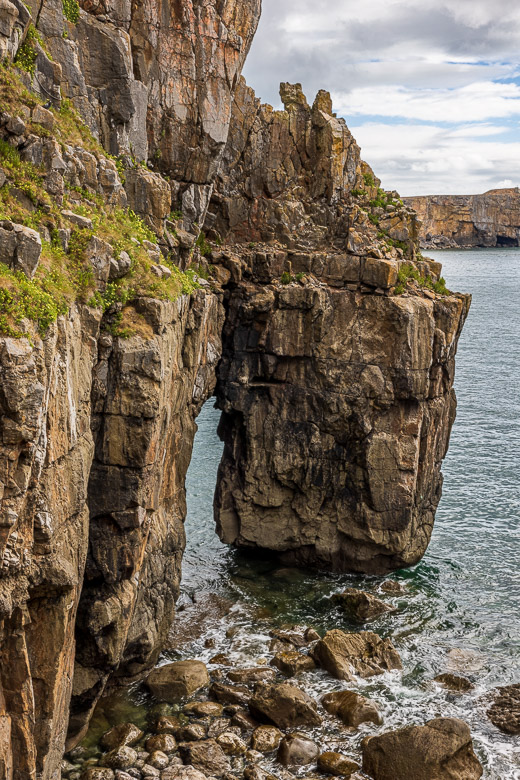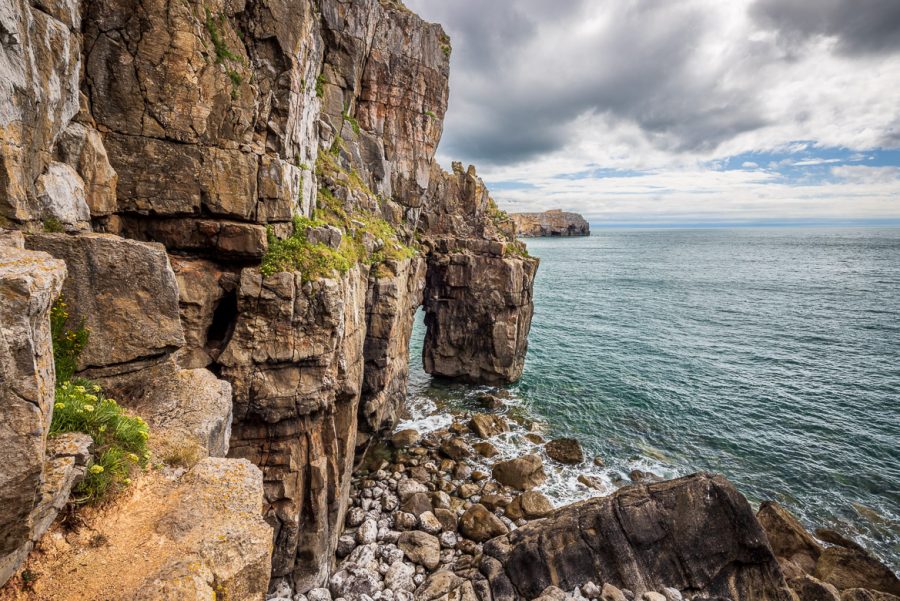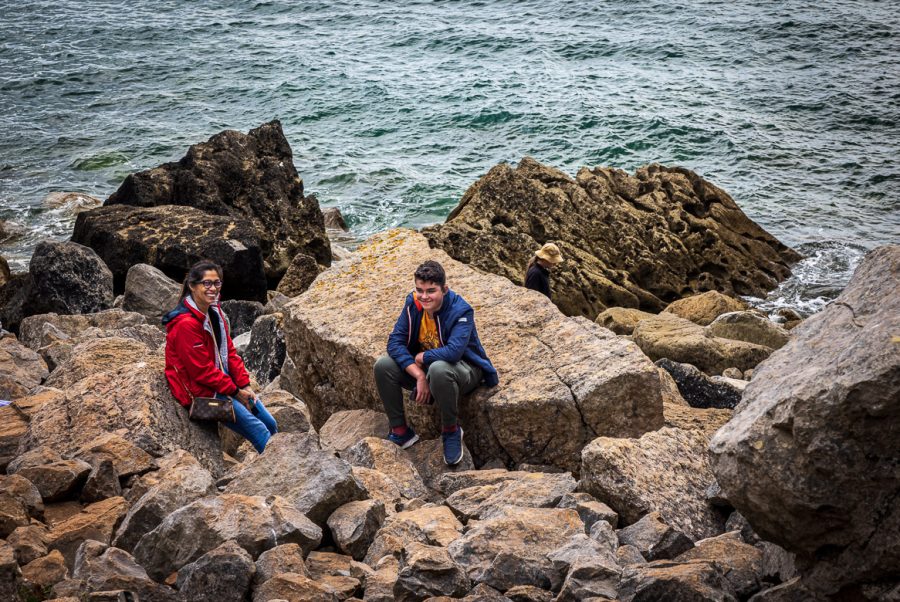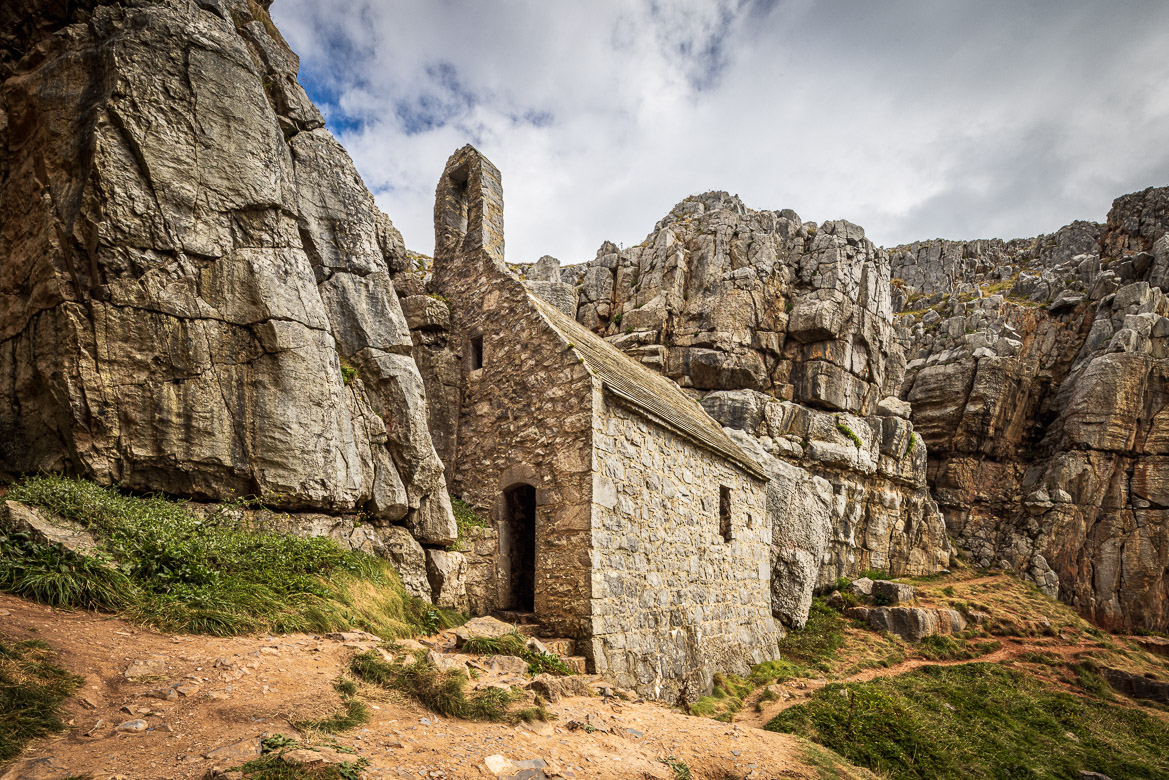
St Govan’s Chapel is a small stone chapel with limestone walls.. Part of it may date back to the 6th century, but the majority of the chapel is from the 13th C. St Govan was a monk, who in the 6th C moved into a cave at the site of the chapel. Near the cave was a holy well. During medieval times the well and cell became a place of pilgrimage for cripples seeing a cure and the original cell was converted into a small chapel.
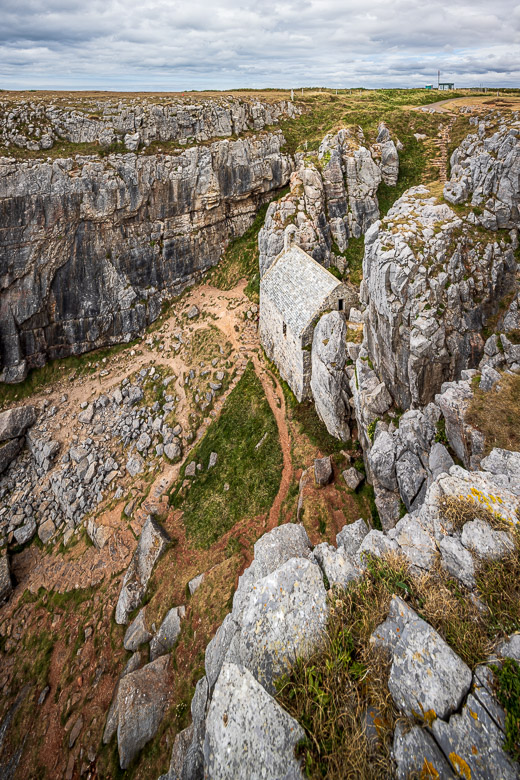
It is built along the cliffside of a south facing bay with the sea roaring just below it. In winter time the seas can break all over the chapel. You enter from the north side climbing down some narrow and steep steps (52 of them), and via another entrance/exit on the west side you can get out into the tiny cove. Not much of an area for St Govan to move around, but the water levels were probably a little lower at his time, so he would have had more space than it was when our family visited.
Inside, the chapel is only 6 metres long and less than 4 metres wide with two low stone benches running along the long walls. Outside, in the cove, you find a lovely stone arch created by the pounding seas during the many winter storms that England and Wales experience.
